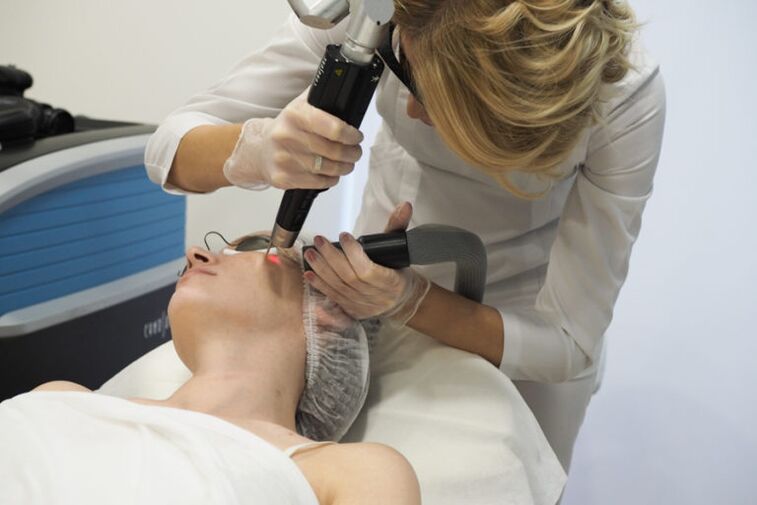Laser rejuvenation is a scientifically proven effective technique. The beneficial effect of a laser on a particular target molecule has been scientifically proven and tested many times.
Laser rejuvenation is a procedure shrouded in many myths. Some say it's great for helping to deal with many skin blemishes, while others are skeptical about it. Furthermore, it is not true that one or the other has undergone a laser and not an IPL procedure. So what is it really? Does laser rejuvenation help or not?
Rejuvenation, what can a laser do?
Laser treatments are the effect on the skin of this light radiation, which is only absorbed by certain molecules. This:
- intracellular and extracellular water - for a CO2 laser;
- oxyhemoglobin, collagen and elastin proteins - for neodymium laser;
- hemoglobin and melanin - for dye laser;
- melanin - for diode and alexandrite lasers.
Upon absorbing light, the desired molecule converts it to heat and, under its influence, decomposes. This includes in the skin the same response that occurs to the lesion, as a result, it starts to develop into the missing elements. New cells, new proteins from the 3D structure of the skin are synthesized - the integumentary tissue is stretched, smoothed and the shine returns to it.
If the laser beams were beams, with distance between the beams (fractional techniques), then microdepressions appear in the skin. The tissue tries to connect the edges of these grooves - and so the area of scars and stretch marks is reduced. And when cells that contain the pigment melanin (the one whose accumulation leads to the appearance of age spots) are heated, the natural dye is excreted by the lymphatic system.
The described effect is typical for any type of laser. But this is where rejuvenation ends with just the CO2 laser. Neodymium and dye lasers can also remove any visible vessels: rosacea, dilated veins, wine stains, little spider veins.
Will there be no effect?
Laser rejuvenation is a science-based technique, but it cannot fail to have an effect. Let's explain: any laser target molecule is in our skin. We form collagen and elastin, otherwise the skin would not be able to stay on the surface but would slip down. We also have hemoglobin with oxyhemoglobin in our vessels - otherwise, how would the skin be nourished. Maybe, maybe, it doesn't have melanin - but that's only in people with albinism.
The effect of a laser on a specific target has been scientifically proven and tested many times. This is not a blind drug introduction - focusing only on the outward signs of hyaluronic acid or collagen deficiency. This is a deliberate release of aseptic (non-microbial) inflammation in the skin, the response of which is always the same: the production of its new elements.
Does laser rejuvenation hurt?
Not always. If the procedure is performed with a CO2 laser, which evaporates the columns of skin, anesthesia is required - even general anesthesia. If you resort to neodymium laser rejuvenation, the procedure is almost painless as there is no trauma to the epidermis and impulses are sent not near the nerve endings but to the microvessels.

If you have the procedure with a picosecond alexandrite laser, which sends pulses under the skin 100 times shorter than with other devices, there will be no pain. Why? The fact is, with such a short pulse duration, heating does not occur - that is, it is the cause of the pain.
How then does rejuvenation occur? Pulses of several picoseconds have a mechanical effect (microbursts of skin skeleton proteins). This triggers the formation of certain substances - cytokines, which transmit information from one cell to another. They support the skin's remodeling processes for a long time.
























